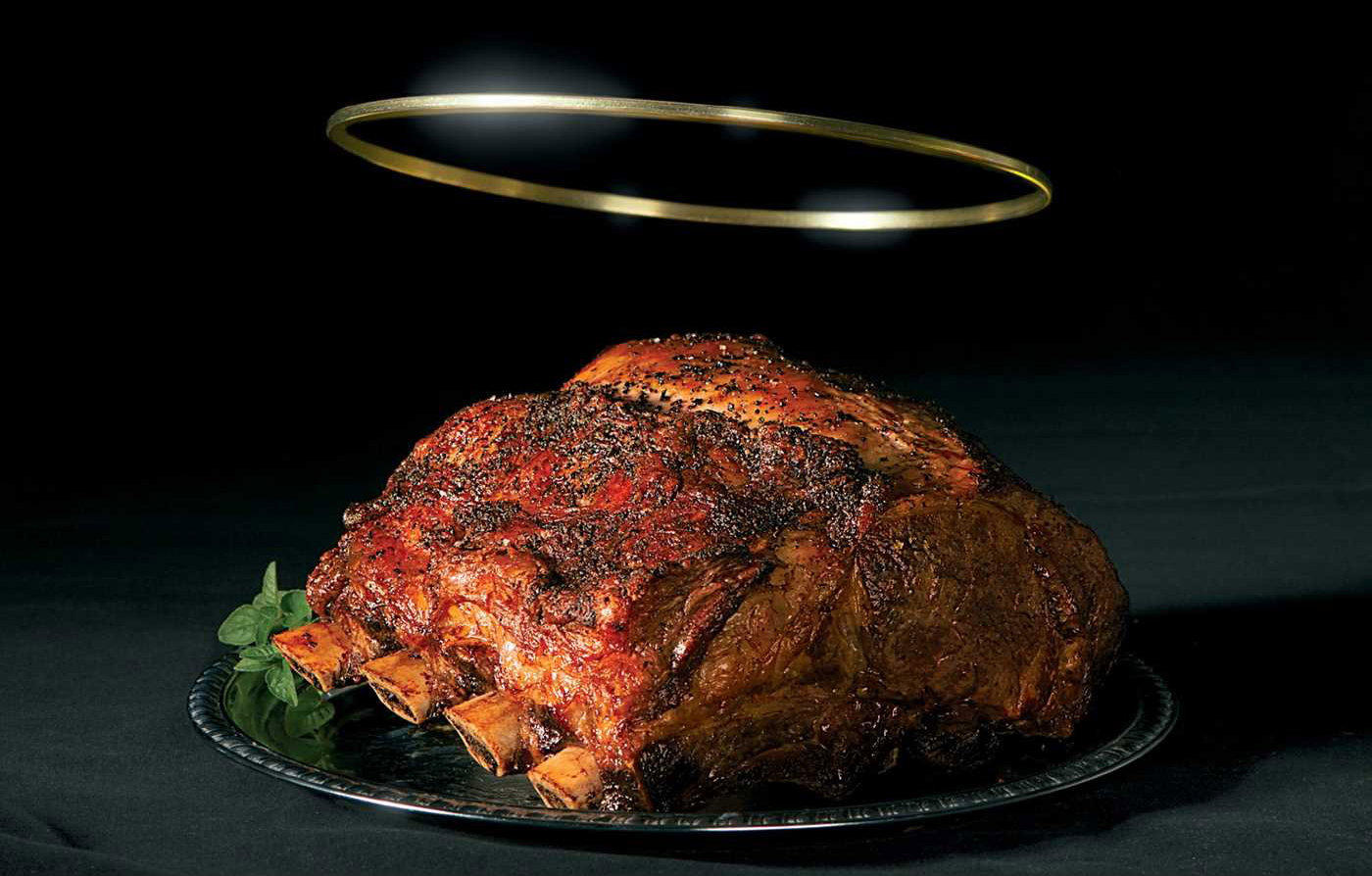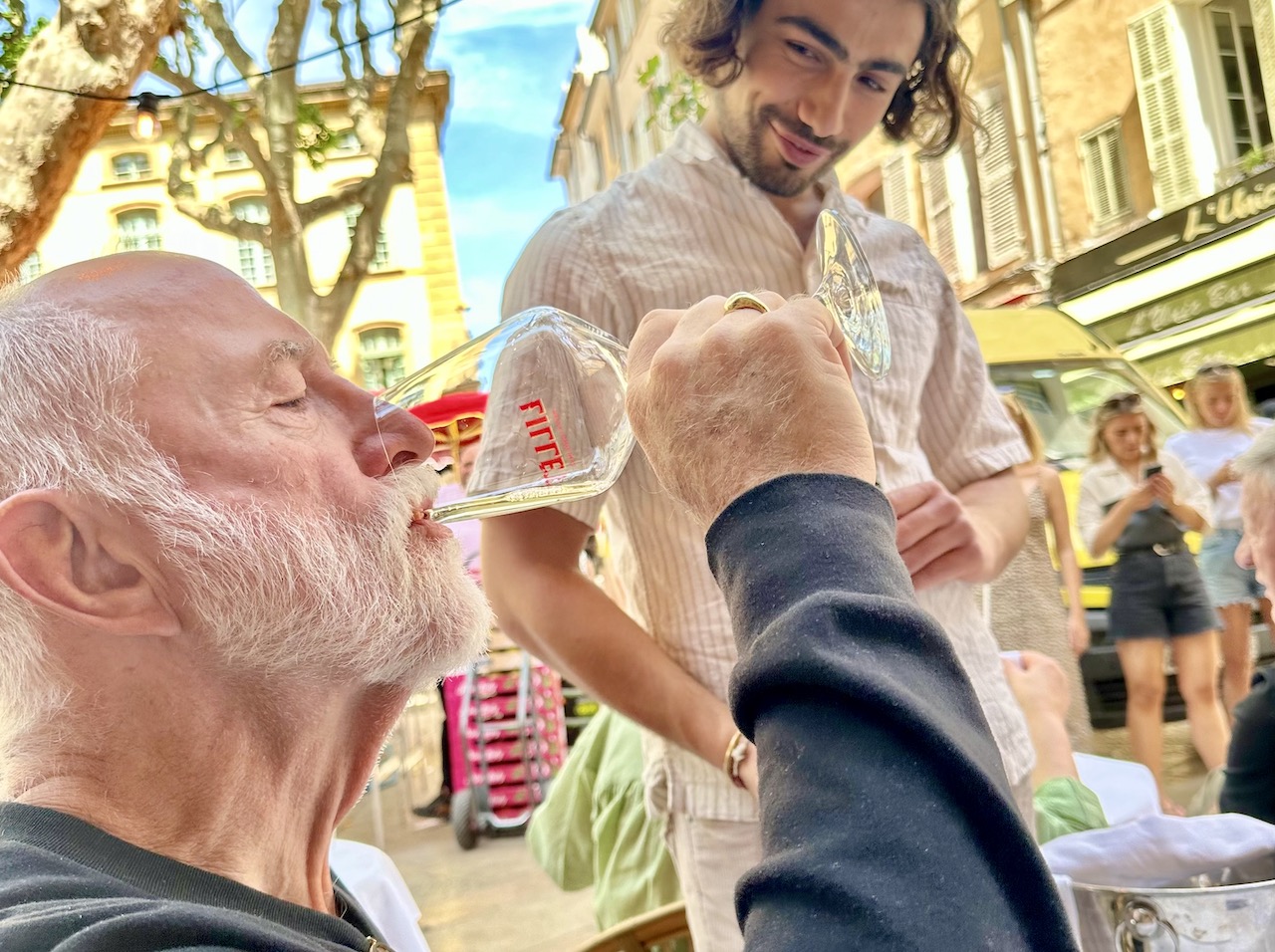How much fat we need depends on other things – how many carbs we can tolerate, for example, and what sort of fat we choose. Saturated fats from sustainably pastured animals is a pretty good start.
Note: The droolworthy featured image (above) is from the cover of The Big Fat Surprise, by Nina Teicholz

I’ve always liked this old 16th-century English rhyme, mainly because it sounded just like my parents – my tall, skinny, carrot-crunching father and my plump, butter-loving mother. Luckily, though I inherited her penchant for pork crackling, fatty lamb chops and anything sautéed in butter, I also inherited a tendency to Dad’s lanky frame – as long as I curb my cursed sweet tooth!
Back to the Jack Sprat rhyme. I thought it meant: Though we all like different things, we can live together in harmony, sharing what’s available and avoiding waste. (And, what’s more, cutting down on the washing up.)
But no! According to the compiler of Mother Goose’s Melody (1795), its moral is in fact: “Better to go to bed supperless than to rise in debt”. Say what?
Fat chance!
Luckily, now that science has put the kybosh on Ancel Keys’ (1904-2004) much-promoted, long-standing but ultimately discredited diet-heart hypothesis, we no longer have to feel guilty about eating animal and other healthy fats. Most famous for his allegedly cherry-picked Seven Countries Study, Keys is the guy who launched the low-fat-is-good-for-you movement in the 50s, with the scientifically unsupported theory that dietary fat causes heart disease by raising blood cholesterol. Not true. (See here for why not, and how the big fat lie came to pass.)

And before jumping to his defence with the fact that he’s no longer here to explain himself, read investigative journalist Nina Teicholz’s meticulously researched The Big Fat Surprise – plus some sterling reviews. It gives great insight into how charismatic bullies and interest groups can prevail in the “scientific” community, too. I’m halfway through the Audible version, and it’s fascinating stuff. (See also Gary Taubes’ NY Times 2002 article, “What if It’s All Been a Big Fat Lie?”; or anything else by the prolific Taubes, including The Diet Delusion, Why We Get Fat and The Case Against Sugar – go to garytaubes.com.

Note: Perhaps tired of the tasteless fodder he’d been advocating for, Ancel Keys went on to invent the Mediterranean diet (whatever that is), retired to a seaside home near Napoli, Italy, and lived to 100 years of age. Apart from spearheading the crappy dietary advice that launched today’s global diabetes epidemic, he can’t have been doing everything wrong.
(Interestingly, in this article, my hero Prof Tim Noakes – more on him below – says that Keys warned about the possible dangers of hydrogenated seed oils as far back as the 1950s. Keys also advocated eating animal proteins, albeit unfortunately in the form of lean meat, skim milk and cottage cheese, which may possibly have helped him reach his century.)
The Banting diet
The Banting diet was popularised by South African sports scientist, endurance athlete and overall great human being Prof Tim Noakes. First published in 1985, Noakes’s encyclopaedic and now iconic Lore of Running was a bible for runners of all levels, including myself. My original fly-spotted copy literally fell apart.
Formerly a high-carb, low-fat pasta-gobbler – as was almost everyone back in the previous century – Noakes is famous for doing a complete about-face* towards low-carb and high fat (LCHF) nutrition, and for humbly apologising to his fans for having been wrong for so long. That took guts, and the book recounts his persecution for going against the grain. (Pun intended.)
* Lore of Nutrition: Challenging Conventional Dietary Beliefs
Actually, what South Africans call the Noakes diet or the Banting diet is most usually described elsewhere as ketogenic: low carb, moderate protein and high fat.

The way I see it, you can do LCHF well, or you can do it badly. Fat is our friend, but in sensible amounts. Some Banting/keto adherents see it as an excuse to pig out, like frying bacon and eggs in an inch of butter and piling the lot onto a fried steak. Or simply eating too much of anything.
Balancing calories
In fact, Noakes’s LCHF eating plan is not a free-for-all protein- and fat-fest. He doesn’t ignore calorie balance. He suggests that if you cut carbs to 100 a day, or 50, or 25 – however low it needs to be for you, and it varies from person to person – any excess weight should come off. If it’s not coming off, he says, that’s probably because you’re overeating fat.
Eggs, nuts, avocados and coconut are fabulously nutritious foods, but you don’t need much of them at a time. A handful of raw tree nuts can keep hunger at bay for hours. A tablespoon or two of olive oil over veggies will do, whether served raw in a salad or cooked. For me, half an avo is enough; unless avo is literally all I’m having, in which case a whole one is reasonable. As for coconut oil, a generous splash in your stir-fry is plenty.
And the same goes for lard. I’ve started scraping the fat off the top of my homemade bone broth and storing it in the freezer for later use in sautées. I store chicken fat, beef fat and lamb fat separately, because they each have such a distinctive flavour; especially the lamb. But I have to remind myself to use it – the habit of pouring oil from a handy bottle (albeit olive oil) is so deeply ingrained.
Nose to tail
Another thing is to eat whole food as Nature intended – and it’ll taste so good that it might not need much added to it. Whole eggs, not egg-white omelettes. Chicken with its skin, not the dry breast. Fatty biltong, yum.

Instead of choosing only the leaner cuts like steak, consider eating the whole animal from nose to tail as the French and some other nationalities tend to do. Admittedly, cheeks and brains, thymus and pancreas, heart, liver and kidneys, feet, tail and bone marrow may not appeal to everyone as much they do to me. I go to town when I’m in France*, especially with glutinous fare like tête de veau (calf’s head) and pied de porc (pig’s foot).
Have a heart?

I don’t love cooking hearts, but as they’re Roy’s favourite dish – his mother used to do them for him – I do them every now and then. Fortunately, they look a lot more palatable served well-browned and then slowly casseroled in onion, garlic, celery, carrots and wine.
Occasionally I bite off more than I can stomach, literally – like the sickeningly smelly tripe sausage called andouillette. I ordered it once in a Chablis restaurant, mistakenly thinking it was a chicken dish. Roy found a great article by Jay Rayner in The Guardian, which accurately describes it as the whiff of death.
* For several years before Covid confined us to WA, Roy and I used to spend a third of the year in France on our replica Dutch barge Karanja. Here are some nostalgic pics, mainly of food. (Hover the cursor over each one to see its caption. For more, visit travelwithverneandroy.com, starting here.)
Calories in, calories out?
No… and yes. It’s become popular to diss the simplistic “calories-in, calories-out” model of weight loss and maintenance. The point is that achieving and maintaining a healthy weight relies on healthy hormonal balance, which can be upset by a whole host of lifestyle factors such as not getting enough sleep, being under too much stress, or being on the wrong diet for you. Some people cannot tolerate carbs – and they will not lose fat, even on a low-calorie regimen, unless they restrict carbs severely.
I’m convinced that Roy is one of them. After all, he lost 35kg by following my low-carb, no-crap nutrition plan. But make no mistake – we restricted calories too, especially so during the first six to 12 months. Those early losses motivated him to carry on with the plan, and also got him used to eating less.
It was two boiled eggs for lunch, not four. It was a moderate serving of chicken or salmon for dinner, along with a pile of vegetables tossed in a little olive oil. I served strawberries, not mangoes; courgettes, not carrots; consommé and not cream-of. (Here’s an interesting interview with Chris Kresser about obesity and the mechanisms of losing weight and keeping it off.)

Roy is also strongly convinced that time-restricted eating has been a huge help; we do the 16:8 plan, eating between roughly noon (or later) and 8pm.
There’s also the fact that protein, fat and nutrients promote satiety. Carbs do not. When you’ve had enough fish, steak or prawns you generally stop eating. Not so with a crusty baguette or a bowl of linguine, sadly. Snacking on a few mixed nuts takes my hunger away for at least a couple of hours; if I had a bag of crisps instead, I’d soon be wanting to chase it with a bar of chocolate.
A piece of grilled salmon does the trick until your next meal, while a bowl of instant noodles will shoot blood glucose sky high and as instantly fuel cravings for another dose of crappy carbs and putrid PUFAs (polyunsaturated fatty acids).
Good saturated fats vs putrid PUFAs
When I say eat fat, I mean: (1) saturated animal fats like grass-fed butter and ghee; pastured chickens and their eggs; grass-fed cattle, sheep and pigs; and (2) healthy plant fats from fresh raw nuts, avocados and their oils; virgin olive and coconut oils. (But the more I look into it, the more I’m personally leaning towards saturated animal fats.)
I’ve totally banned omega 6 polyunsaturated oils (PUFAs) from my own kitchen – generic vegetable oil, of course, canola, grapeseed, sunflower, corn, peanut etc. That’s mainly because they’re unstable, oxidise easily and quickly become rancid and toxic. (For their nasty effects on the body, read more here. And here.)
Thank goodness my health nut dad – my own favourite Jack Sprat – had studied chemistry and recognised the dangers of margarine right from the start. He continued to insist on butter. When all the neighbours started tucking into blocks of yellow Rama and tubs of yellow Flora, he wouldn’t have it in the house.
Takeaway
Some of the top nutrition scientists and thought leaders I follow (Dr Mercola, Chris Masterjohn PhD) explain how and why the relatively recent replacement of saturated fats from wild and pastured animals with refined omega-6 vegetable, bean and seed oils in the SAD (standard American diet) are at the root of all our chronic ailments, from Alzeimer’s, diabetes and other metabolic disorders to heart disease and cancer.
Politicians and their health authorities have been misinforming or even lying to us for decade after decade – some through ignorance, sometimes in line with self-interested agendas. And they’re still doing it, not least with the current pandemic. We can’t afford to blindly follow self-seeking governments and their corrupted scientism. We have to dig deep to find the genuine science instead, even when – especially when – censorship and obfuscation of the facts make it so extremely hard to find.
As for what’s coming up next – whether in this blog or in the mad, mad world we live in – who knows?

























Both You and Roy are testament to this informative article on healthy eating. It has certainly worked and is one we can all follow, and not feel deprived. Great reading your articles. Thank you for sharing these reminders of how we can look after our bodies.
So much said here Verne – thank you! I will come back to this article and follow up on all the links …. learn more 🙂
Thanks, Christa!